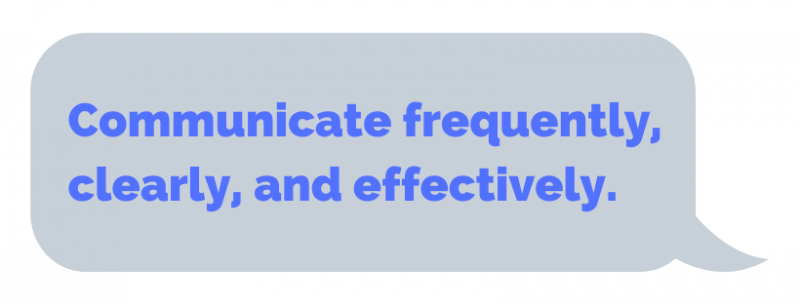How can agencies grow their digital business

We recently wrote a post about the benefits of creative agencies partnering with a development agency rather than doing all their dev work in-house.
That post was aimed at creative - marketing and design - agencies. This one, however, adopts the other perspective - the perspective of the agency that aims to position itself as an industry leader in the digital space and attract clients with which it’ll forge long-term partnerships.
But, with so many development agencies from all over the world catering to the mass need for digital transformation and digital experience, showing your value and attracting big clients can often prove quite a challenge.
So, with this in mind, what can agencies do to attract and retain clients with development requirements? This is exactly what we’re going to tackle in this blog post - read on to learn about five proven ways for positioning yourself as a top development agency.
1. Make employee experience the top priority
In the “future of work” (which we’re in fact already experiencing), a talented and satisfied workforce is immensely important. This is why a good employee experience should be the number one priority of a successful business.
Feeling motivated at work and feeling at ease with the people you work with are some of the most important factors contributing to effective, quality work (thanks to Voranc Kutnik for providing the great article).
Another vital factor to employee well-being is a clearly defined career path. Knowing that they won’t have to be stuck in the same position for years and what their options for promotion are will have a profound positive impact on your employees.
You should base your business around certain fundamental values - employee-centric, of course. Learning, collaboration and a great work-life balance are, for example, some of our core values at Agiledrop - and, believe us, it truly pays dividends.
The bottom line is: make sure your employees are happy. A good workplace and employee experience translate into a good customer (or, in this case, client) experience.
2. Dedicate time to learning & growth
Part of a good employee experience is enabling your employees to grow, to learn new skills and technologies, to work on projects that interest them with tools they’re excited about.
You never know when a new trend will emerge, or something existing will become the new trend, and your client will want to make use of it for their next big project as the most cutting-edge solution.
By constantly investing in the learning and personal development of your team, you’ll stay on top of competition and always be ready to deliver.
As already mentioned in the previous point, learning is one of Agiledrop’s core values. We frequently hold AgileTalks, where developers can give sessions about the technologies that excite them most lately - and they often also infect their colleagues with this excitement.
This allows us to always be prepared beforehand when a client is looking for a specific solution - “you want exactly so-and-so JavaScript framework for a feature on your front end? Hey, one of our developers was actually working on a similar project a few months back, so we can definitely emulate the process we used there and make use of our in-house skillset to deliver exactly what you need!”
3. Become a partner, not just a contractor
A contractor is someone that does a certain job on behalf of and under instruction by someone else. A partner, on the other hand, is someone that looks to the mutual benefits of all sides involved and strives to make this relationship a healthy one.
You need to show your clients that they can trust you - both your development expertise and your business ethics. Communicate frequently, clearly and effectively. Be consistent in your offers and values. Document everything, and ensure your developers do so too.
Essentially - cultivate the relationship and bring value to it. Your goal is to provide a solution to the partner’s pain, yes - but it shouldn’t be so much a business-centric approach as an ethical one. Think of it as wanting to solve the pain of a good friend - the gain you get out of it is of a more altruistic rather than a self-serving nature.
If you become a partner in the true sense of the word, by valuing the relationship and producing quality work for the client, it makes it that much more likely that the client will think of you again when they need a similar solution in the future - and, voilà, you’ve potentially earned yourself a long-term partnership!
4. Ensure your developers align with the client’s team
This is something that will probably come naturally when you’re already following points 1, 2 and 3. A well-defined, strong company culture that prioritizes employees will ensure that your developers can assimilate seamlessly into any kind of team they become a part of.
Moreover, if your aim is to be a partner to your client rather than just a contractor, you’ll want to make sure that the partnership is as frictionless as possible.
Since your developers will be the ones most in contact with the client’s team, you’ll need to guarantee beforehand that they are familiar with the requirements outlined in the documentation, as well as with all the tools and processes that the client’s team are using.
A great way to ensure this is by having an internal document with clearly defined guidelines as to communicating with clients and working on their projects. At Agiledrop, we have this sort of “playbook” - you can read more about it in this blog post.
The goal is to have your own developers essentially become teammates to your client’s team in every practical aspect of the word. In this way you extend the value from its business side to all layers of the working arrangement.
5. Be transparent in your offer and communication
One of the most frustrating things in an agency partnership are unexpected issues that arise out of miscommunication. In order to prevent these from happening, or at least keep them to a minimum, you need to be transparent in your offer and all communication right from the get-go.
Tell it how it is, without trying to sweep certain unpleasant details under the rug in the hope of securing that partnership while ignoring the potential problems this may cause down the line. Your future client should always know what they’re getting themselves into.
Exhibit your trustworthiness by addressing and appeasing your potential client’s possible concerns before they even think of them. This shows both dedication and meticulousness, and is a true testament to your expertise not just on the technology, but also on the business side.
Ultimately, this ties back to point number three - clear communication and a consistent offer are key to a successful partnership, and these practices should be implemented from the very first contact with the potential client. If you resolve potential challenges beforehand, you’ll guarantee a much smoother execution of the project and greatly increase the chances of it turning into a long-term partnership.
Conclusion
We were happy to share with you these five approaches which in our experience have proved effective in securing and retaining clients. In the super competitive digital landscape, winning over clients is hard enough, let alone forging long-term partnerships with them.
Hopefully, we’ve helped simplify this endeavor for up-and-coming development agencies. The practices outlined in this blog post are very effective without being costly or difficult to implement, so they can serve as a great starting point to optimize all your present and future agency partnerships.







